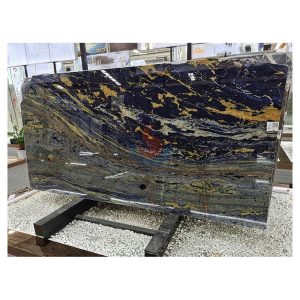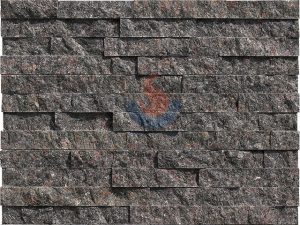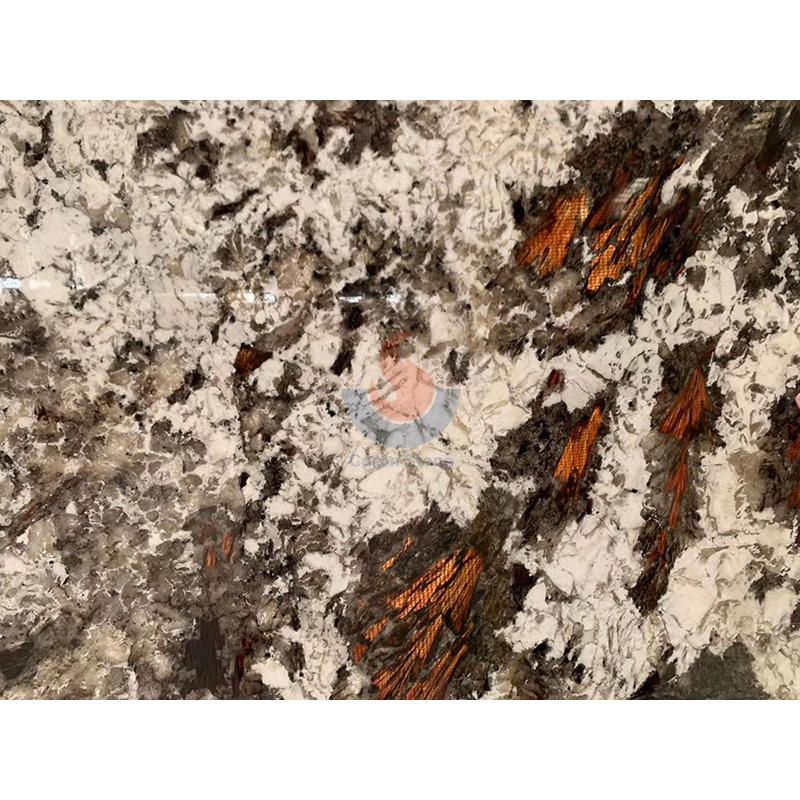On the stage of nature, granite is known as the “tough guy of nature” for its hard texture and unique geomorphic features. Being a major member of the igneous rock family, the creation process, geological relevance, and extensive use of granite in human existence paint a vivid picture of nature and mankind. This article will take you into the world of granite to explore its formation, characteristics and important role in earth science and human civilization.

Brazil Import Blue Sone Cloisonne Granite Blue Snake Granite
1. Formation and geological significance of granite
Granite’s formation is a direct mirror of the earth’s inner might. In the weak section of the crust, underground magma develops by rising and cooling. This process not only documents the evolutionary background of the planet but also gives geologists important data for deep structure analysis. Many geologists consider granite as a “probe for understanding the deep information of the earth since its history is a microcosm of the history of earth evolution.”
2. Distribution and characteristics of granite
About 25% of the surface igneous rock area is Granite, which is quite dispersed worldwide. China’s exposed area, notably in the eastern region, Guangdong and Fujian are especially concentrated in granite distribution; as a nation of granite, this makes 10% of the total land area accounted for. Granite’s composition consists mostly in mica, feldspar, and quartz. Its hard texture, coarse mineral particles, and rather great compressive strength and erosion resistance define it.
3. Application of granite in human life
Granite’s exquisite and robust qualities make it rather significant in human life. Granite is an essential element from the Roman Colosseum and the ancient Egyptian obelisk to contemporary architectural embellishment, floor tiles, walls and kitchens counters. Its brilliant, smooth polished surface gives the inside room elegance and cosiness.
4. Natural wonders of granite landforms
Granite landforms with their distinctive forms and amazing beauty have evolved into a lovely scene in the natural landscape. Excellent representatives of granite landforms are Yosemite National Park in the United States, Torres del Paine National Park in Chile, and Huangshan and Huashan in China. Furthermore adding great beauty to the natural environment are the unusual formations created by the joints and weathering of granite, including stone forests and stone eggs.
5. Ecological and environmental issues in granite areas
Although granite areas are famous for their hard rocks and unique landforms, they are also facing ecological and environmental problems. Granite’s weathering in tropical and subtropical environments could cause landslides and soil erosion, hence producing exposed rocky surfaces. Furthermore, the so-called “red desert” could result from the degradation of the weathering crust producing inadequate soil and limited plants.
6. Protection and sustainable development of granite
Protection and sustainable development are especially crucial in face of environmental and ecological issues in granite areas. Ecological restoration, vegetation restoration, and maintaining water and soil to slow down the speed of weathering erosion need the application of scientific approaches. Simultaneously, logically make use of granite resources, support their creative use in sectors like building and decorating, and witness the green growth of the granite sector.

Tan Brown Granite Splitted Culture Stone
Granite, this tough guy in nature, not only shows the magnificent epic of the evolution of the earth with its hard texture and unique geomorphic features, but also proves its irreplaceable value with its wide application in human life and civilization. To attain harmonic coexistence between man and nature in face of environmental and ecological challenges in granite areas, we need give more attention to ecological preservation and environmental governance. Together, let us treasure and defend this priceless gift of nature and permit granite’s hardness and beauty to be passed on always.





